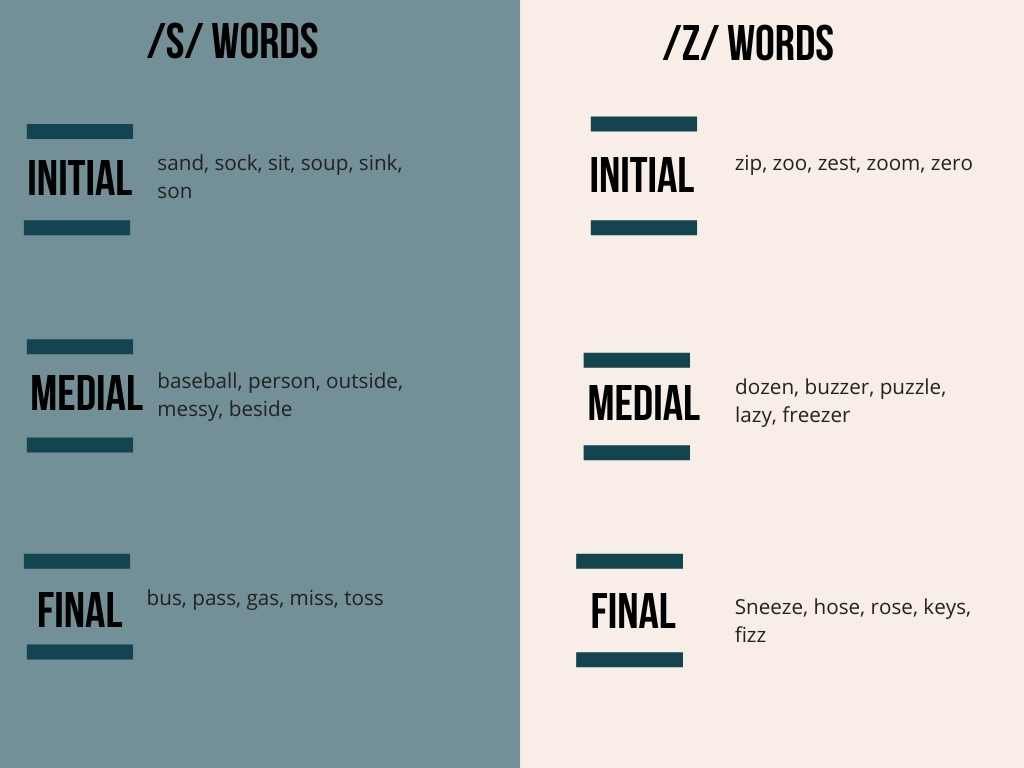How to Fix a Lisp
Lisping is one of the more common speech problems, with estimates suggesting that as many as 23% of people attending speech therapy struggle with lisping disorders of varying levels of severity.
Lisping can occur in both children and adults. Many adults have a residual problem that has persisted since childhood.
Fortunately, most people with a lisp can be successfully treated with speech therapy. Speech therapy for a lisp aims to help the individual learn how to produce speech sounds correctly. This usually involves exercises that help the person become aware of their tongue movements and mouth position when producing specific sounds.
If you are an adult looking to fix your lisp or your child is experiencing problems with a lisp, don't hesitate to seek help. You can overcome your lisp and speak clearly and confidently with the right therapy.
How Long Does it Take to Fix a Lisp?
What is a Lisp?
A lisp is a speech problem resulting from incorrect tongue and teeth placement when producing certain sounds. A lisp is a functional speech disorder (FSD). A functional speech disorder is an issue learning how to make a specific sound or a group of sounds when speaking.
The term 'functional' means that the disorder's cause is unknown. Functional speech disorders may persist into adolescence and adulthood. FSDs can be treated successfully by a speech-language pathologist (SLP).
When you say, /s/ or /z/, your tongue tip should touch the roof of your mouth just behind your front teeth. However, when a person lisps, sometimes the tongue protrudes between the front teeth. The sound made is more like a 'th' than a /s/ or /z/.
What is a Lisp?
Interested in learning more about Lisps? Check out our blog!
What Causes a Lisp?
There are many reasons why people have lisps, and the majority of them occur at a very early age. However, lisping doesn't necessarily have any known origins.
Adults most commonly want to fix a lisp because they still hold onto a childhood tongue placement and movement habit. Changing speech patterns is difficult for some people, especially when dropping long-term habits like ending consonants with an "S" sound or adding an "S" sound to words that don't end that way.
Lisping tends to be most pronounced when tired, stressed, or anxious. Some people who speak quickly also produce lisps more often than otherwise.
Why Do People Have Lisps?
There are many reasons why people have lisps. Some possible reasons include:
Dental issues such as an overbite, open bite, or narrow dental arch
Anatomical variations such as enlarged tongue or tonsils or misalignment of the jaw
Ankyloglossia, or tongue-tie that restricts the movement of the tongue
Do I Have a Lisp?
If you're unsure whether you have a lisp, there are a few ways to find out. You may find it hard to say the /s/ and /z/ sounds if you have a lisp due to inaccurate tongue placement.
One way to check for a lisp is to say the word "silly" and listen to how the /s/ sound is pronounced. The lisp will be most pronounced when making the /s/ sound.
Another way to check for a lisp is to say "shoe." You might have a lisp if you place your tongue between your teeth when producing the /sh/ sound. You might also produce the word "zoo" as "thoo" or the word "soup" as "thoup." Some people also end words with an "S" sound when the words don't end in that way.
Some individuals who lisp also have issues with /sh/, /ch/, and /j/, although lisping these sounds is less common.
If you think you or your child has a lisp, the good news is that there are many ways to correct it. Meeting with a speech-language pathologist for an assessment would be the first step. A speech therapist is an expert in articulation and phonological disorders.
If the problem stems from incorrect tongue placement, then exercises and practice may be all that is required. If the cause of the lisp is anatomical, then a consultation with a dentist or orthodontist may be recommended.
How Do You Evaluate a Lisp?
The purpose of an assessment for a lisp is to determine what sounds you have a problem saying and if there is a pattern to your difficulties. Your speech therapist will also try to define the type of lisp you have and provide tips for effective improvement of your lisp.
The speech therapist needs to evaluate your speech, look for any contributing causes to your lisp, and look at the specific speech sounds that give you trouble.
Your evaluation will typically consist of the following:
Obtaining a detailed history of speech and language development.
An examination of the speech muscles, including the lips, jaw, tongue, teeth, and hard/soft palate structures and movements.
Reading or repeating a list of words; often, the word list will contain the /s/ and /z/ sounds in different positions and word and sentence lengths.
Standardized or informal articulation assessments.
An interview will be conducted to determine how the lisp is impacting overall communication and self-esteem.
Transcription of some of the single words and phrases said aloud for later analysis.
Obtaining a longer speech and language sample for analysis. During the analysis, the speech therapist will evaluate all aspects of communication, including vocal quality, fluency, rate of speech, pragmatic language skills, and grammatical structures.
Types of Lisps
When the tongue protrudes between the front teeth during the production of /s/ or /z/, it is referred to as an interdental lisp. A dental lisp is when the tongue touches the front teeth for the sounds /s/ or /z/.
There are two other types of lisps: the lateral lisp and the palatal lisp. In a lateral lisp, air escapes over the sides of the tongue during the production of /s/ or /z/. In a palatal lisp, the tongue makes contact with the palate, distorting the /s/ and /z/ sounds.
The four types of lisp are described in more detail below.
Interdental Lisp (Frontal Lisp):
Interdental lisps (frontal lisps) are the most common type of lisp. A person with a frontal lisp tends to push their tongue too far forward in their mouth, distorting their sounds. In this type of lisp, the tongue comes outside of the mouth between the upper and lower teeth.
Words such as 'soup,' 'baseball,' and 'bus' might sound like 'thoop,' 'batheball,' and 'buth.'
Words like 'zip,' 'dozen,' and 'knees' might sound like 'thip,' 'dothen,' and "kneethe."
A frontal lisp will generally resolve by the time a child is 4.5 years old. A speech-language pathologist should recommend an evaluation if the interdental lisp persists beyond 4.5 years old.
Dental Lisp:
The dentalized lisp is similar to the frontal lisp, except in the dental lisp, the tongue does not protrude outside of the mouth. Instead, the air is blocked at the furthest point forward in the mouth. The tongue pushes against or rests on the two front teeth, resulting in a muffled sound.
Many children may dentalize /s/ and /z/ sounds until around 4.5 years old, at which point they outgrow them. If they don't outgrow it, an evaluation is recommended.
Lateral Lisp:
A lateral lisp occurs when air escapes over the sides of the tongue, and the /s/ and /z/ sounds become distorted. One of the hallmark symptoms of a lateral lisp is the feeling that the person has excessive saliva in their mouth.
With a lateral lisp, a person may also feel air coming out of the sides of the tongue rather than a central and continuous flow from the front of the mouth.
Lateral lisps are not common in typical speech development. Any individual who has a lateral lisp would benefit from an evaluation.
Palatal Lisp:
A palatal lisp occurs when the air is blocked at the hard or soft palate by the middle part of the tongue. Palatal lisps are by far the least common.
Unlike interdental and dentalized lisps, palatal lisps are not a part of normal development. A speech assessment is recommended for anyone with a palatal lisp.
Is a Lisp Ever 'Normal'?
It is normal for children to make interdental or dentalized /s/ and /z/ sounds until about 4.5 years old.
However, lateral and palatal lisps are not part of everyday speech development. If your child has one of these types of lisps, a speech therapist should assess it as soon as possible.
How to Correct a Lisp
Lisp speech therapy (also known as articulation therapy) is the best way to correct a lisp. S sound speech therapy can help both children and adults who have a lisp. Individuals who try to fix a lisp on their own are rarely successful.
During one-on-one treatment sessions, a speech therapist can provide specific exercises to help correct your lisping. Speech-language pathologists can also offer you practice techniques at home as support to help you reach your goals.
The goal of therapy is to develop good muscle memory and practice the correct placement of the tongue when speaking.
Speech treatment for a lisp typically includes:
Observation of the speech therapist demonstrating proper tongue placement.
Listening carefully to the instructions for accurate tongue placement
Controlling speech muscles to produce a more normal sound.
Practicing target sounds in words, phrases, sentences, and conversation.
Practice can include controlling the breath, shaping sounds, and moving lips or tongue in a specific way.
Typically the exercises assigned to you during therapy are repeated over and over again in a variety of different contexts. The goal is to help you become more aware of your speech and practice correctly speaking words with others.
Exercises will likely include practicing word, phrase, and sentence sounds. You may also be asked to repeat tongue-twisters or nonsense words multiple times to help with muscle memory.
The therapy may include moving the tongue into different positions. You may be asked to practice tipping or tongue presses. You may be asked to move your tongue downward, or the speech pathologist may request that you do some exercises with your tongue raised.
For young children, therapy will be fun and engaging and often involve games for reinforcement.
Your speech therapist will most likely reassess your progress occasionally during lisp treatment. Once the sounds are mastered during the therapy sessions, you begin practicing words and sentences on your own at home.
In some cases, your therapist may recommend supplemental treatment from another professional, such as a dentist or orthodontist, if they suspect that you have dental issues or anatomical variations contributing to your lisp. A collaboration between multiple disciplines may be used to help treat the underlying cause of your lisp.
How Long Does it Take to Fix a Lisp?
Speech-language pathology intervention for lisps is usually short-term and successful. Opinions vary among speech therapists regarding how long it will help a person overcome a lisp.
The prognosis for improvement can sometimes be predicted by the severity of the lisp and how much practice takes place outside of therapy. The more you practice, the quicker your progress will be.
Speech therapists typically recommend scheduling regular meetings over several months to see good results.
Speech therapy usually consists of a series of one-on-one sessions. Speech therapy meetings are typically held once a week and typically last 30-45 minutes. Attending meetings regularly is necessary for improvement.
Your speech therapist will develop a treatment plan that focuses on the specific sounds causing your difficulty. Your speech-language pathologist will give you helpful tips and show you how to produce the targeted sounds to help you practice.
To get rid of your lisp, you'll also need to practice at home. This involves following your speech therapist’s direction and repeating the exercises they provide.
It's essential to be patient and diligent with your practice if you want to see results from speech therapy. Improvement can vary from person to person, so don't get discouraged if you don't see results right away. With time and effort, you can correct your lisp.
S Sound Speech Therapy Techniques to Do at Home
Consult with a speech-language pathologist before starting speech therapy exercises to work on your lisp from home. If you do not see improvement despite regular practice, you should consult your speech therapist for more tips for working on your sounds at home.
The tasks work best when practiced consistently, every day, for 3 to 5 minutes. With younger children, a reward system may help those who are not self-motivated.
1) Use a Mirror
Using a mirror can be a great way to correct a lisp, especially the interdental lisp (also known as the frontal lisp), because, with this type of lisp, you can see if the tongue protrudes outside of the lips. The goal is to see the tongue touching behind the teeth.
Look into the mirror and smile. Keep your mouth open while your teeth are closed. The tongue should remain behind the front teeth. It should lightly touch the part of your mouth right behind your teeth called the alveolar ridge. When you begin to say /ssss/, the air should flow smoothly over the tongue and out of your mouth when the tongue is in the proper position.
To practice, make a pronged /ssssss/ sound at least 10 times a day for a week until you can make the /s/ sound while keeping your tongue behind your teeth.
You can also close your eyes, focus, and feel your tongue as you produce the sound and then use a mirror to double-check or reinforce placement.
2) "Exploding T" Technique
Another simple exercise is called the "exploding t" technique. Repeat the /t/ sound four times followed by a prolonged /sssssss/. Make sure your tongue stays behind your teeth while making the /s/ sound. It should sound like t-t-t-tsssssss. After you master this task, you can practice saying words that end in /ts/, such as "mats," "pats," and "hits."
To help correct a dental lisp, focus on making the tongue only lightly touch behind the front teeth instead of pushing hard against them.
3) Practice Words
Once you have mastered the appropriate tongue position, you will want to practice words that contain /s/ and /z/ in the beginning, middle, and end of words. Here is a list of words for you to practice:
Choose to work on one word from a section per day. You can bookmark this page for easy reference.
4) Form Sentences
After you have mastered your speech at the word level, you can practice incorporating your words at the sentence level. If you are working with a child, you can pick a list of words and play a game like "making silly sentences."
For example, "The seal drank salty soda." or "Sally ate a mud sandwich at the South Pole."
These sentences will inspire creativity and help them practice the target sounds in a sentence.
5) Rapid Fire Questions
You can watch a short video or read a high-interest story in this activity. After watching the video, have a partner ask you rapid-fire questions to test your muscle memory and accuracy in producing your sounds correctly.
6) Getting Creative
Focus on accurate placement of your target speech sounds while engaging in each of these activities:
Read aloud for 2 to 5 minutes each day.
Sing songs aloud.
Create audio recordings and videos of yourself talking or reading a favorite excerpt from a story. Listen to the recordings, rate your articulation, and re-record if you think there is room for change.
It is important to see and hear the speech difference!
7) Conversations
Once you have mastered the above exercise, your speech therapist will want to ensure that you have established good muscle memory and do not lisp on any of your sounds for at least two months. At that point, you can move on to practicing your target sounds at the conversation level.
Go slow as you use your new tongue movements at the conversational level. If your /s/ and /z/ s slip, don’t worry! It's a normal part of the process.
Do not stop your mid-conversation if you notice a lisp. Drawing attention to any difficulty making the sound may only hinder the process.
Reducing a lisp can take practice, patience, and time.
How Speech-Language Pathologists Can Help With a Lisp
If you suspect your child has a lisp, or if you are an adult and have been struggling with your /s/ and /z/ production for a long time, it is crucial to speak with a speech-language pathologist.
Many qualified speech therapists can help with a lisp, but finding the right one is key to helping you improve your lisp. A speech therapist who is experienced in working with lisps will perform an evaluation and may recommend therapy.
Connected Speech Pathology offers articulation therapy online for children and adults. By evaluating and treating a lisp using telehealth, we can use the cameras to achieve close proximity to the mouth for modeling the sounds and providing client feedback. This is an effective way of providing lisp speech therapy from the convenience of your home.
If you need professional help with a lisp, one of our experts can help.
About the Author
Allison Geller is a communication coach, speech-language pathologist, and founder of Connected Speech Pathology, an international online practice providing professional communication coaching and speech therapy for children, teens, and adults. With more than two decades of experience, she has worked in medical and educational settings, published research on aphasia, and leads a team of specialists helping clients improve skills in public speaking, vocal presence, accent clarity, articulation, language, fluency, and interpersonal communication.











